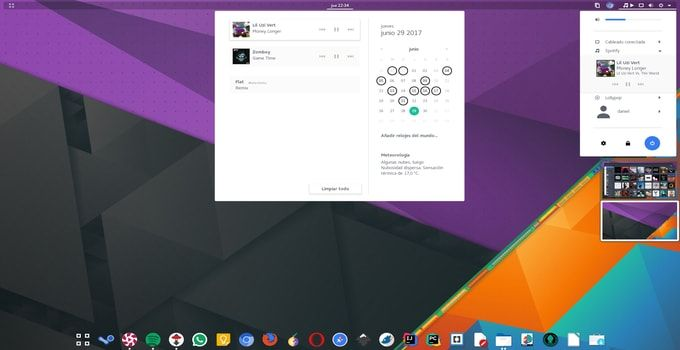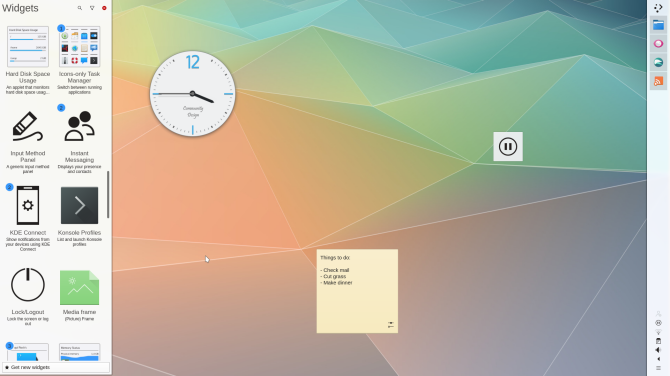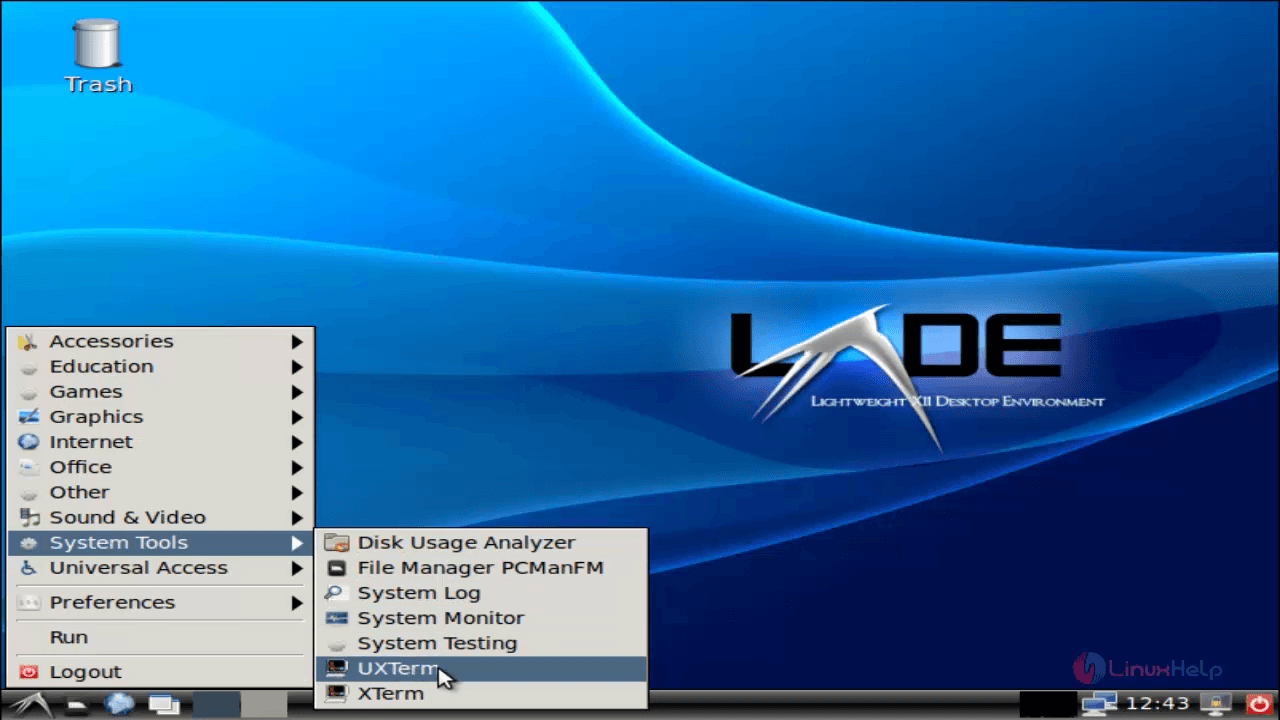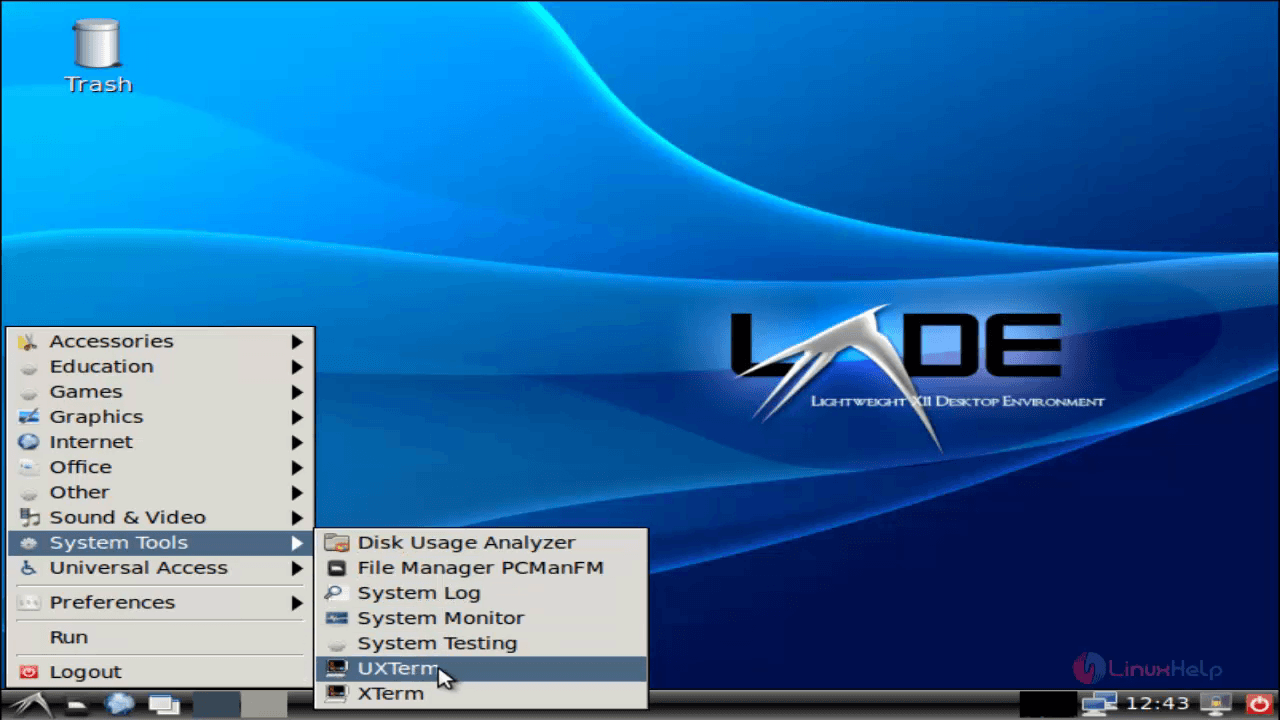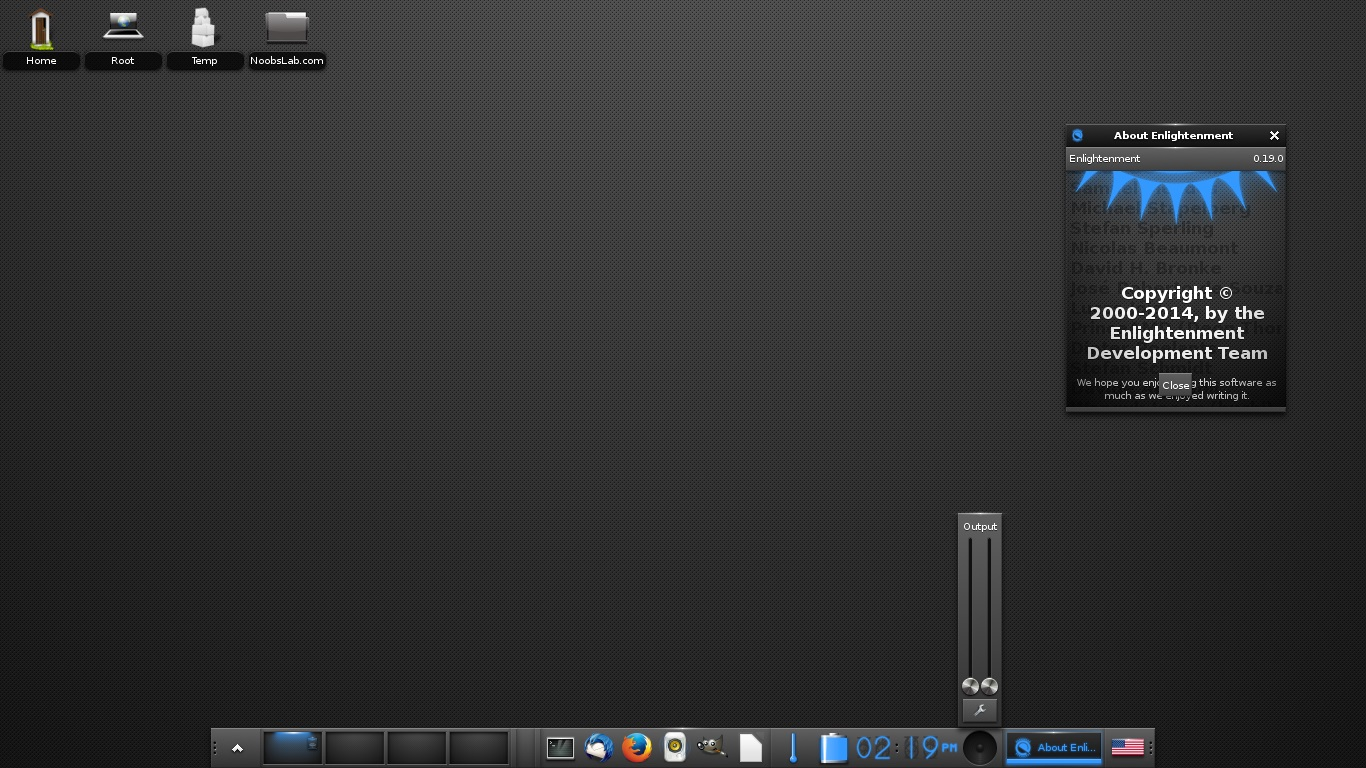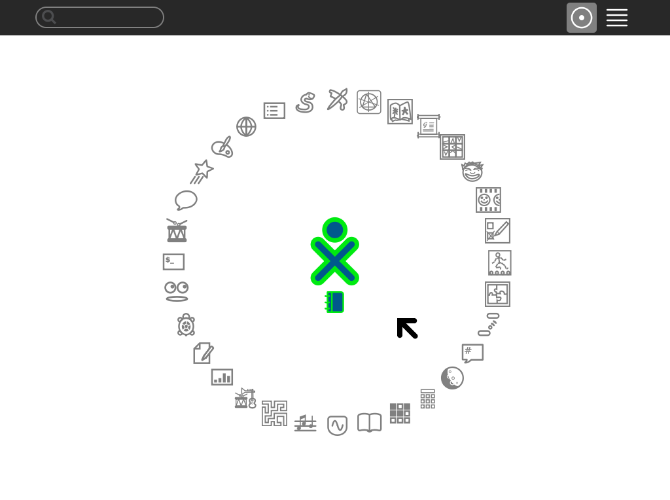A huge amount of Linux users prefers to work on the operating system by the command-line terminal, but you can also use the graphical user interface instead of it. According to the expert users, there is no specific best Linux desktop environment because it depends upon different factors such as resource consumption, easy to use, aesthetics, and functionality. However, in this article, we will give you complete information about the 12 best Linux desktop environments so that you can choose the best one to fulfill your needs.This list is created by comparing the features, reviews, and functionality of these Linux desktop environments. So, here is the list of the 12 best Linux desktop environments:
GNOME
GNOME is easy to use, a clean and modern desktop environment that is a bit minimalistic compared to other available Linux desktop environments. GNOME is created for offering convenience to the users, and it is customizable so that anyone can use it according to them. Therefore, you don’t have to do extra clicking for finding your browser or any other app because you can keep them in one place. GNOME is well-known and one of the most useful and best Linux desktop environments for Linux users.
Pros and Cons of GNOME
Pros
- It offers thousands of extensions.
- GNOME has a huge developer base.
- It consists of unobtrusive and minimal design.
- It has Wayland support.
Cons
- The quality of extensions are not good enough
- It has less efficient workspace management
- It is resource hungry.
Xfce
At first look, Xfce looks a bit older and boring, but we assure you that your mindset will change after unpacking it because it is one of the best Linux lightweight desktop environments available. Xfce is becoming one of the most reliable choices, but it has a comparatively small team for development that results in late updates. Nowadays, many users think that Xfce is an amazing alternative to MATE because Xfce’s developers are continuously keeping the interface amazing and light. It is a highly customizable Linux desktop environment, but it needs third-party tools.
Pros And Cons Of Xfce
Pros
- It is fas and efficient on the resources.
- Xfce is customizable.
- IT has amazing workplace management.
Cons
- It has an old default design, and development is slow.
- There is no Wayland support.
Cinnamon
It is a default interface for the Linux Mint, one of Linux’s most broadly used versions because it is a good distro for beginners. Cinnamon is designed for those users who want to switch from Windows because it offers a traditional desktop experience. Cinnamon is designed to make it easier for users who have just switched from Windows to Linux. Many users love Cinnamon due to its combination of familiarity as well as ease-of-use. Many users love Cinnamon due to its combination of familiarity as well as ease-of-use. We don’t recommend you to use this Linux desktop environment because it takes high resource consumption.
Pros And Cons Of Cinnamon
Pros
- Good UI and theming.
- It has a Windows look.
- It is a bit customizable but offers good features.
Cons
- It is not robust enough and sometimes shows bugs.
- It is only supported on the Linux Mint.
- It uses high memory of the system.
Mate
The story behind Mate’s creation is that when the Gnome community decided to move forward from Gnome 2 to Gnome 3, then many developers of Gnome decided to use Gnome 2 existing codes and created Mate. Therefore Mate does not have different extensions like Gnome 3, but it is easy to use, faster and customizable. Developers of Mate have invested a good effort and time to update the background code, and many new Linux users found this a lightweight alternative of GNOME. Initially, Mate was designed to fulfill the needs, but it has become one of the best Linux desktop environments due to the evolution.
Pros and Cons of Mate
Pros
- It has a lot of active developers.
- Mate is lightweight, fast, and easily customizable.
- Users get a stable experience.
Cons
- It is quite slow to adapt to new technologies.
- There is no Wayland support.
- Users feel that.
KDE Plasma
KDE Plasma is one of the best Linux desktop environments for those who want to play with their system’s interface. KDE offers various features, but some users always complain that it is not stable enough, and it is also a bit heavier. Apart from it, all on-screen components work as a widget, which is movable and resizable.
Pros and Cons of KDE Plasma
Pros
- It offers a huge feature-set.
- It has a huge developer base and Wayland support.
- KDE plasma is more customizable.
Cons
- It is not robust enough.
- KDE Plasma has some old codes.
- It is very resource hungry.
Pantheon
Pantheon can be a good choice for you if you switch from macOS to a Linux desktop environment. It is a bit similar to Budgie because it is also created for the particular distribution. You may consider it less customizable than the other Linux desktop environment on the list. Still, new users will get an amazing desktop experience without having any mess in settings or configure. If you want to go far from normal use, you can be disappointed with the lesser available options. However, it offers various features such as separate workspaces for different activities, built-in productivity tools, picture-in-picture mode, and many more. Pantheon’s core applications are written in C and Vala, and most of them are designed from GNOME languages.
Pros and Cons of Pantheon
Pros
- It is a lightweight desktop environment.
- Pantheon offers a user-friendly interface and smooth animation.
Cons
- It has limited extensions.
- It has less availability of options for the configuration.
Budgie
Budgie is one of the newest desktop environments. It is a Solus OS mirror because a small Solus development team with other teams has contributed to this desktop environment’s development. Budgie also offers a few amazing apps that allow you to work well, including an all-in-one control center (Raven) and a settings app that offers full control of customization. This desktop environment looks like the Chrome OS, and it uses various GTK technologies, which are used in the GNOME desktop environment. Even if it is a new desktop environment, it still looks like an old interface compared to Xfce and MATE, but it manages to become a bit modern.
Pros and Cons of Budgie
Pros
- It is lightweight and stable because of better technologies.
- It offers a modern look.
- Budgie supports large distros.
- It uses little memory.
Cons
- It does not have some basic features.
- It does not have satisfactory support for multi-monitor.
LXDE
LXDE is a user-friendly, energy-efficient, and lightweight Linux desktop environment. It is based on the GTK+, so LXDE can be a good alternative to Xfce if it runs slower on your system. It proves that LXDE is supported for all distros. Therefore it can be supported on older machines too.
Pros and Cons of LXDE
Pros
- It is lightweight, user friendly, and takes little space.
- XDGE offers different configuration tools.
- It supports almost all distros.
- It is highly customizable on the older system.
Cons
- It is has a less attractive user interface.
- It has a shortage of default applications.
- The default apps of LXDE can’t reach a satisfactory level.
Unity
Unity is one of the most well-known versions of Linux desktop, a former default interface for Ubuntu. From Ubuntu 17.10, the GNOME desktop environment has become the default interface instead of Unity. Originally, Unity was developed for replacing the older version of GNOME. Unity is designed for the small screen with a space-saving Launcher and a Horizontal top menu feature. Still, it is less customizable as compared to other desktop environments in this list.
Pros and Cons of Unity
Pros
- It looks amazing and modern.
- It is easy to find different apps because Unity offers a huge amount of keyboard shortcuts.
- Unity offers good filtering features.
Cons
- It is less customizable.
- It is not suitable for a big-sized screen.
- The interface is not stable enough and provides a poor, poor notification system.
LXQt
LXQt is one of the lightest Linux desktop environments on the list, so it is created by the merger between LXDE’s Qt port and Razor-Qt. In case you don’t like Lubuntu, it will be hard to build interest in LXQt because it is quite similar to Lubuntu.
We don’t recommend using this desktop environment if you are a new user because it does not have different customization options. Lubuntu offers the best way to experience LXQt because the distro looks good and modern while manages to be a lightweight Linux desktop environment.
Pros and Cons of LXQt
Pros
- It is a lightweight Linux desktop environment.
- It looks modern and good.
Cons
- It is not good for a new user.
- It is limited due to its features.
Enlightenment
Enlightenment has grown so much, and now it includes a full desktop environment, wearable, TV, and mobile user interface platforms. This Linux desktop environment was started over a decade ago, and initially, it worked as a windows manager project for the x11 system. Enlightenment is not much reputed among Linux users. This Linux desktop environment’s art style is a little skeuomorphic compared to cartoony images present in other free desktops.
Pros and Cons of Enlightenment
Pros
- It can work well on both old and new devices.
- It is fast, light, and offers different themes.
- If you have programming language knowledge, then you can perform the configuration of the environment.
- It is user friendly.
Cons
- The standard of the default themes is not good.
- It is not for beginners of the Linux desktop environment.
Sugar
This Linux desktop environment is specifically designed for helping children in their learning, so we can say that it is the best Linux desktop environment for students and kids. It is simple so that kids can use it without having any complexity issues. This Linux desktop environment comes from Sugar labs, which is a non-profit team of volunteers. Sugar can run on the lowest requirement, you can run it on old laptops, computers, and microcomputers.
Pros and Cons of Sugar
Pros
- It is fun, educative, and available in more than 25 languages.
- It is cross-platform.
- It offers different tutorials, guides, and interactive applications.
Cons
- There is a hardware limitation.
- This Linux desktop environment is limited for educational purposes.
Conclusion
In this article, we have provided complete information regarding the best Linux desktop environments. So as we have previously discussed, according to the expert users, there is no specific best Linux desktop environment because it depends upon different factors such as resource consumption, easy to use, aesthetics, and functionality. This article will help you understand the Linux desktop environments to use the best one according to your requirements. Which is your favorite Linux desktop environment? Let us know!

